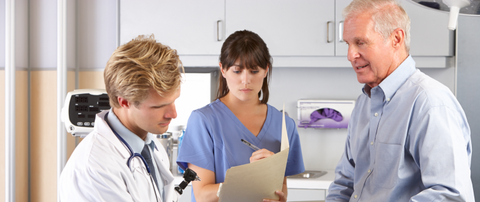ON YOUR FEET ALL DAY? HOW THIS NURSE REDUCED HER FOOT AND BACK PAIN

I love being a healthcare professional making a difference in improving patient’s lives and health. As a peri-operative nurse standing for long periods in the operating room, foot pain is the bane of every nurse’s existence. Even if you start your day with an infectious smile and positive attitude, being on your feet the entire 12-hour shift can turn even the most cheerful nurse into a grumpy one.
As I grow older, I constantly struggle with the physical demands of static posture, from continually standing in one position during lengthy surgical procedures and or awkward postures from tilting the head downwards for long periods of time.
Other workplace challenges range from carrying heavy instrument trays, bending down to reach the sterile field while scrubbed, assisting surgeons or the worst part of standing on hard work surfaces such as concrete, creating repetitive strain and pain in the feet from lack of arch support.
All surgical personnel are at risk for work-related musculoskeletal injuries. Simple foot and ankle pain can lead to disability and puts our careers at risk. But as we in the medical profession know, prevention is better than the cure.
The Association of periOperative Registered Nurses (AORN) recently published a position statement outlining ergonomically healthy workplace practices. It outlined strategies to reduce the risk of repetitive injuries and provides guidelines for developing a preventative plan for an ergonomically healthy perioperative environment. Proper arch support was listed as one of the most important preventative health factors.
A COMMON PROBLEM
Imagine walking through the physical therapy (PT) department and seeing your coworker, a peri-operative nurse of 25 years, as the patient. Unfortunately, this scenario is more common than you think. Thirty-eight percent of nurses suffer from back pain so severe they must take time off from work and to 12% of nurses have such severe back pain that they must leave nursing altogether.
Past surveys have shown up to 54% of workplace injuries among nursing, psychiatric, and home health aides were musculoskeletal disorders (MSDs). The U.S. Department of Labor defines MSDs as injuries or disorders of the muscles, nerves, tendons, joints, cartilage, or spinal discs.
A recent study of 636 Japanese University nurses found foot and ankle pain was prevalent in 24% to 51% of staff. Respectively, the study also showed the prevalence of pain that prevented the nurses from performing daily living and work-related activities at 4% and 17%.
SOME GREAT NEWS
According to Nurse.com, 45% of women, 65% of men nurses wear running shoes to work. If you use this type of shoe, you can add a supportive insole that provides the kind of arch support you need to help reduce pain.
For me, having better arch support was the best way I found to prevent tired, painful feet, legs, and lower back at the end of a long shift. When my arches are properly supported, my whole body, and especially lower back, are aligned. I even noticed less neck pain. The best part was that without all this pain I felt like I had more energy at the end of the day.
There are a lot of shoe inserts out there that promise to provide arch support, but not all of them deliver. When I came across SelectFlex and saw it was customizable, I gave it a try. It’s PowerLift Arch dynamically lifts your foot arch with each step and corrects the foot’s tendency to roll inwardly or pronate. Up to 80% of the population’s feet tend to pronate, which throws off the body’s alignment. This gives you painful feet at the end of the day from misalignment. Plus, it’s adjustable so you can choose the level of support that works best for your feet.
Other inserts also fail to address the impacts of walking on a hard surface all day. I found SelectFlex stabilized my ankle as I walked, absorbing the impact throughout the day. For healthcare professionals who are constantly walking on hard hospital floors, this is a great product.
If you’ve ever looked into medical orthotics, you know how expensive they can be. What sealed the deal for me was when I learned SelectFlex costs one quarter of what medical orthotics cost. If you want to feel better, be more active and more productive, take a look at SelectFlex online at www.selectflex.com.



